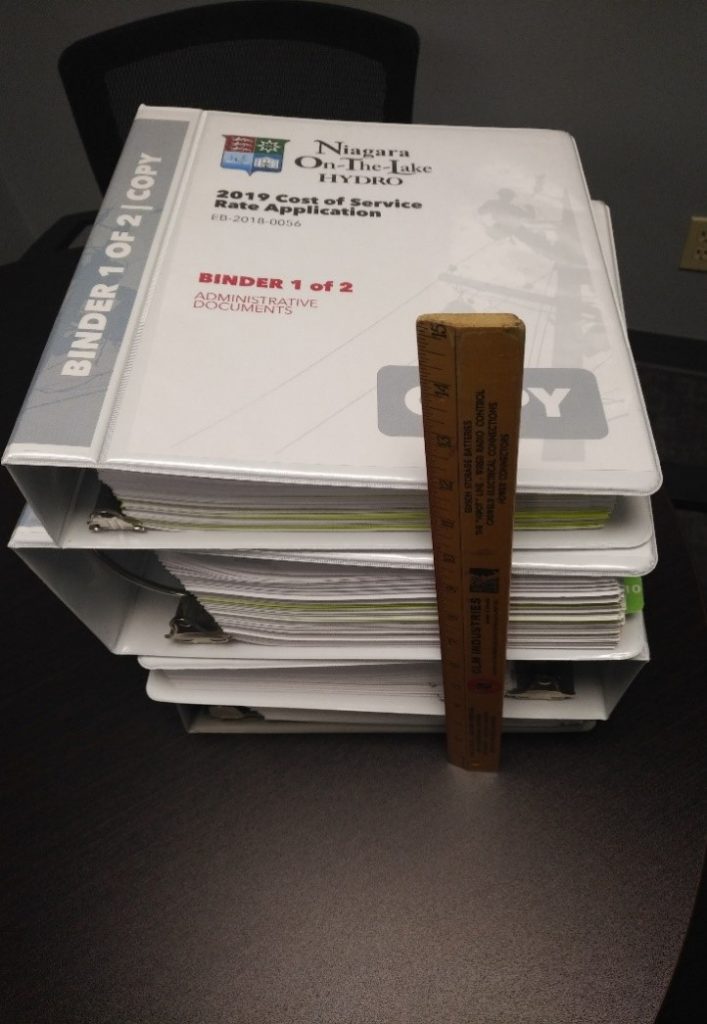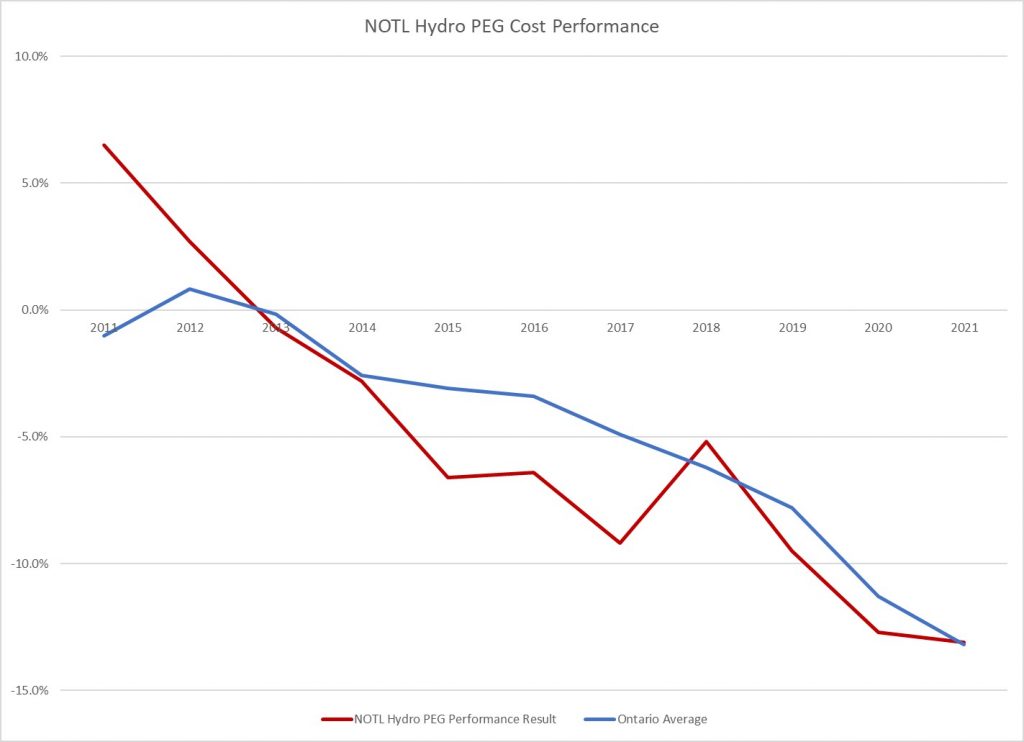Work has commenced on the NOTL Hydro Cost of service application for rates starting January 1, 2024. This may seem rather early but this is a sizable undertaking. The picture below is of all the paperwork from out last cost of service application for rates in 2019. The picture is a bit dark but that is a 15” ruler so the stack of papers is a foot deep.

As I have mentioned a few times, we are a monopoly. Our customers have little choice but to use our service. There is no competitive alternative. Instead, we are heavily regulated by the Ontario Energy Board (OEB). Regulation will never be as good as competition for managing pricing; but it is the best alternative.
The regulatory process for NOTL Hydro includes a deep dive rate application every five years (Cost of Service) with more cursory inflationary adjustments every year in between. These in between applications are known as IRM or Incentive Rate-setting Mechanism applications. NOTL Hydro is in the midst of its IRM application for 2023 rates. Information relating to this application can be found on both the OEB website (https://www.rds.oeb.ca/CMWebDrawer/Record?q=CaseNumber=EB-2022-0052&sortBy=recRegisteredOn-&pageSize=400) and the NOTL Hydro website (https://www.notlhydro.com/regulatory/rate-applications/ ) . The case number is EB-2022-0052.
The Cost of Service application is essentially a bottom-up budget in which all costs must be provided and justified. The OEB has laid out in its own documentation all the information that is required to be provided by the LDC. This keeps the structure of the applications consistent between LDCs allowing for easier comparisons. Key components of the Cost of Service application include:
- A detailed operating budget including comparisons and a history from the last cost of service application.
- A detailed capital plan including comparisons and a history from the last cost of service application.
- A Distribution System Plan that lays out the strategic vision for the system over the next five years.
- An Asset Management Plan that lays out how we will ensure the system is being maintained efficiently.
- A discussion on how we keep engaged with our customers as well as the result of the customer satisfaction surveys taken every two years.
- Our capital structure (debt and equity).
- The resulting calculation of rates and what the impact will be on customers.
One of the inputs the OEB reviews is a statistical analysis by the Pacific Economics Group (PEG) of all the LDCs. As can be seen in the chart below, over the past ten years, NOTL Hydro (in red) has gone from having a cost analysis higher that the industry average to one which is equal to it. As part of the analysis, PEG groups LDCs and this year NOTL Hydro moved into the second best grouping out of five; better than most LDCs.

Once a Cost of Service application is filed it is available to anyone to review. It will be on our website as well as that of the OEB. The OEB will conduct a formal hearing whereby anyone can participate (intervene) by asking us questions or making a statement. The reality is, unless a consumer has a specific issue, the cost and difficulty of this process is too much for a regular business or residential customer. Instead, there are “professional” intervenors who will participate in the process and review our application along with staff of the OEB. These intervenors are usually lawyers or other professionals who have made a career out of this. They usually represent a special interest group. The good news is they also have a very detailed knowledge of the process and of how the LDCs compare. They must also “justify” their continuing interventions by the quality of their contributions to the process. The bad news is they have nothing to do with Niagara-on-the-Lake, would not know what issues are salient to the residents of Niagara-on-the-Lake and could likely not know who in Niagara-on-the-Lake they are meant to be representing. Their pay during this also comes from Niagara-on-the-Lake as is paid by NOTL Hydro and factored into rates.
Like any process, it has its strengths and weaknesses. As mentioned at the start, this is a substitute for competition so while it may be somewhat onerous the costs and efforts required pale in comparison to if we actually had to market and sell. Some of the requirements, such the budgets and the system plans, are also either valid business exercises or good processes for a utility to engage in. Some of the others, such as the cost allocation which attempts to allocate costs between different user groups, is a bit too esoteric to be useful so could be much simplified.
Time to get to work!